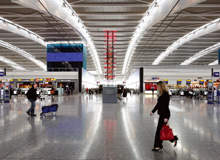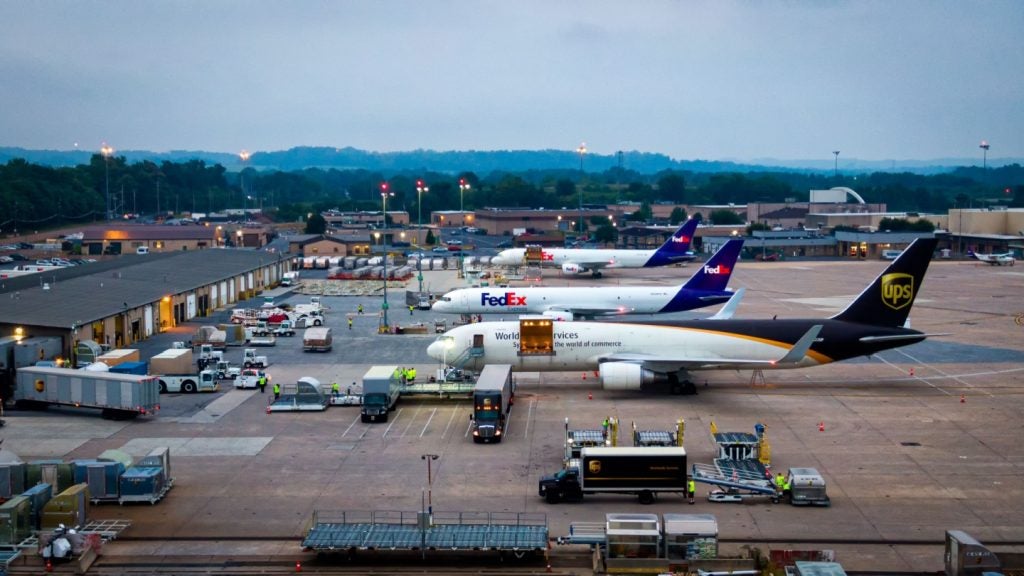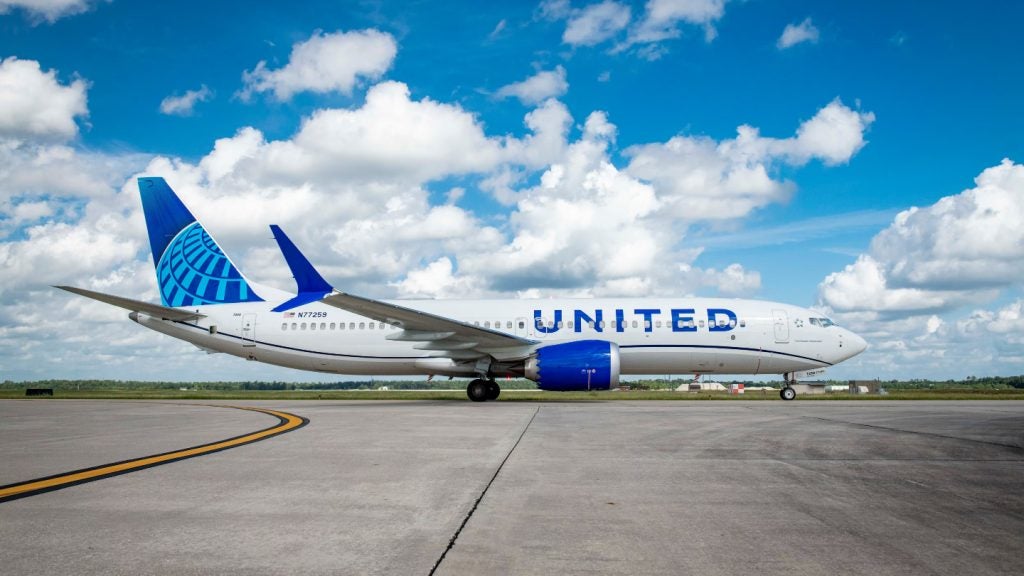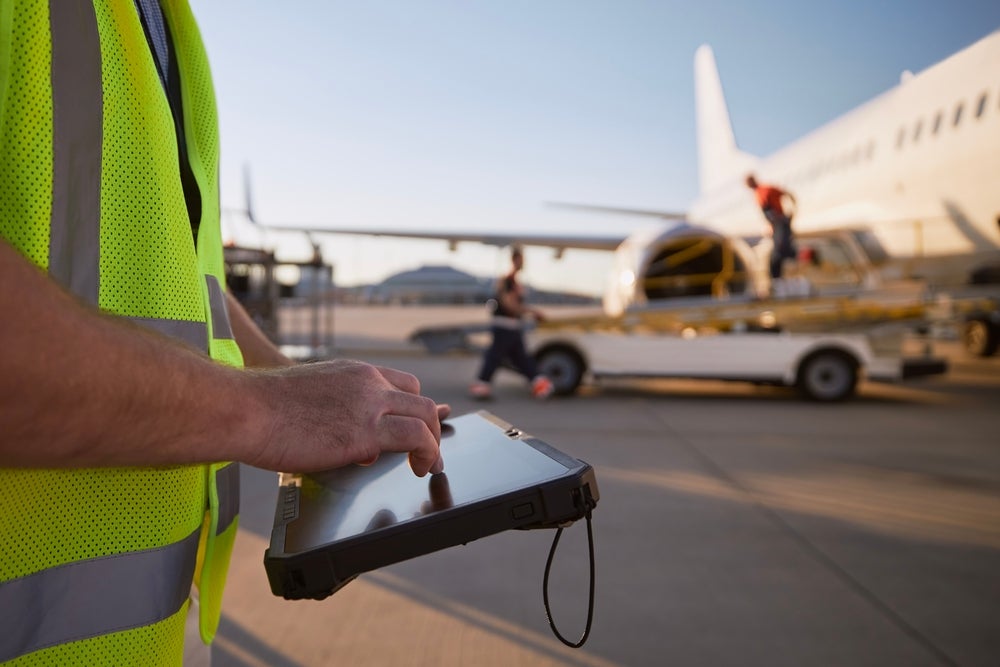
Restoring the general public's faith in Heathrow's terminal 5 – Britain's largest free-standing building – following one of the largest opening debacles in airport history was always going to be an uphill struggle for the UK's largest scheduled airline British Airways.
Such was the intense media spotlight fixated on the terminal during its first calamitous ten days of operations – in which some 28,000 bags failed to travel with their owners and over 500 flights were cancelled – that any progress since has seemingly seeped into the shadows of the unforgettable series of mishaps.
Yet in recent weeks BA has adopted a fresh stance on T5 through a breakaway advertising campaign aimed at allowing the terminal's current operational status to speak for itself.
Active advertising
In early May 2008, the airline transferred 4,500 members of staff to T5 and a month later it added a number of long-haul flights to the terminal's schedule. By 25 June another 1,200 cabin crew and pilots had also joined the operations.
See Also:
BA says it believes the successful completion of these three moves went relatively unnoticed. "We were pleased with these developments and felt we were delivering a number of things terminal 5 promised to deliver on a consistent basis," says a BA spokesman.
How well do you really know your competitors?
Access the most comprehensive Company Profiles on the market, powered by GlobalData. Save hours of research. Gain competitive edge.

Thank you!
Your download email will arrive shortly
Not ready to buy yet? Download a free sample
We are confident about the unique quality of our Company Profiles. However, we want you to make the most beneficial decision for your business, so we offer a free sample that you can download by submitting the below form
By GlobalData"Terminal 5 has been open for 140 days or so and while the problems we faced in the first few weeks have been well documented, we felt it was time to come out and say 'terminal 5 is working'. We are letting the terminal speak for itself by looking at some of the daily statistics and getting them out there in an open and factual way. It is quite a change in advertising for us," he adds.
The prominent advertising campaign works on a 24-hour turnaround production time basis that illustrates, using photography, real customers during their journey through the terminal the day before the ads appear in print. It also draws heavily on customer feedback, which given the fierce criticism first voiced at the terminal, displays a confidence in the general public that the airline hopes will be reciprocated towards T5.
A research team has been established at the terminal which is responsible for gathering data on customer activities. It also supplies the key metrics required to compile official figures for various governing organisations such as the Association of European Airlines (AEA) and the Civil Aviation Authority.
But just like T5's opening, the campaign did not run exactly to plan. The airline's efforts were marred with mild controversy after it claimed that up to 90% of flights were 'taking off within 15 minutes of the scheduled time' – a statistic that was subsequently revealed to be false.
"Basically there was a genuine human error. One of the statistics used was completely correct but there was the wrong use of the word 'take-off' in the advert. We apologised for that and from on now our departure adverts will be correct," a BA spokesman says.
Addressing past problems – baggage and departure
Of the several bones of contention facing terminal 5, lost luggage has remained a hard cross for BA to bear. A report from AEA suggests BA customers were 80% more likely to lose their luggage in the first half of 2008. On average nine passengers on every BA jumbo jet flight between January and June were said to have found their bags missing upon arrival at their destination.
"Firstly it is not lost luggage, it is delayed luggage and that is primarily down to a transfer issue and primarily because other airlines are not getting the baggage to us on time. There are different carriers using different processes at Heathrow. When luggage is being transferred from BA to BA then the statistics are fairly robust but when they are coming from other carriers they are not so, which is part of Heathrow's infrastructure and the way the other terminals interact with terminal 5," the BA spokesman says.
"The figures compared to previous years are getting better but there is more work to do and we are committed to doing it. These will improve as we get all the flights under one roof using one system and one baggage team which will both be BA's. We expect some improvements and recognise there is more work to do in that area," he adds.
The terminal's inconsistent flight departure times have also made consistent headlines. The same study from the AEA found that one third of BA's short-haul and medium-haul flights and roughly one third of its long-haul arrivals and departures were at least 15 minutes late this year – a figure distinctly below the European average.
"Heathrow is a difficult airport to operate at – there is simply no getting away from that. It only has two runways and is therefore the busiest two runway airport in the world so when things start to unravel, they unravel very quickly. It does not have the same slack built into it as the other major European airports such as Frankfurt, Amsterdam Schiphol, Madrid and Paris Charles de Gaulle," says the BA spokesman.
"We have been looking to get into the main European competitor pack – the likes of Lufthansa and KLM – which we have been behind for a while. We have been trying to push our on-time departure percentage into the 80s which is the benchmark."
Increasing capacity
The tail end of July and August are the busiest times of year for any airport, but for terminal 5 the peak period could be construed as a welcome opportunity to showcase its capabilities. When the terminal first opened in March it was handling an average of 40,000 customers a day, a figure that has since risen to 60,000. Furthermore, the terminal faced the high-profile challenge of taking a significant number of athletes and officials to Beijing for the Olympic Games.
"It was a massive project as BA was the official carrier of team Great Britain and key sponsor of the 2012 event," says a BA spokesman
"The summer so far is going well and the performances we are turning in are better than last year. It all goes back to customer confidence and staff confidence – the more customers in there, the more experience the staff gain and the more understanding they both have of the terminal." Following the summer there are two more key dates for BA, with another 60 long-haul flights due to move to terminal 5 on 17 September and a final phase of 30 flights on 22 October. Once both are complete, flights will increase from the current 420 a day to 510 a day.
"What we have done over the summer is to ensure that staff have been working across terminals 4 and 5. Whether it is baggage handling staff, customer relations staff or turnaround management – they all have experience of T5, which will stand us in good stead on 17 September. We have had three big moves since opening and we have two left. It is a team effort and we need to step up and deliver what we know we can deliver," a BA spokesman says.
"Following those dates we hope the terminal will live up to its early promises. We have had some good customer feedback – in particular for the premium lounges, which we invested £60m in. We are also listening to other feedback, so for example we are opening a business fast check-in and some new ways of getting through security quicker as well."
The long-haul flight ahead
In the more distant future, a final construction phase of T5 will be completed. Construction of the terminal has been divided into three parts – A and B which opened officially at the same time on 14 March with C due for completion in 2010.
By then the airline expects to have a number of A380s in its fleet so the terminal must become A380 compatible, not to mention the small issue of catering for the 2012 Olympics Games in London.
Because of its cost and controversy, the high-profile nature of T5 means BA will continue to face strong challenges in the recent and distant future. While the airline is quick to accept the inadequacies of the terminal's initial opening, it has also urged customers to judge operations on the present not the past.
With a pivotal few months still ahead, there is hope yet of Heathrow's terminal 5 living up to its initial hype. "Our chief executive Willie Walsh said don't judge T5 on day one, judge T5 on year one. We have two big dates coming up and they will be real tests, which we need to get right to keep the customers confident. All the hard work we have done in the last four months or so is ready for those two big days," concludes the BA spokesman.







